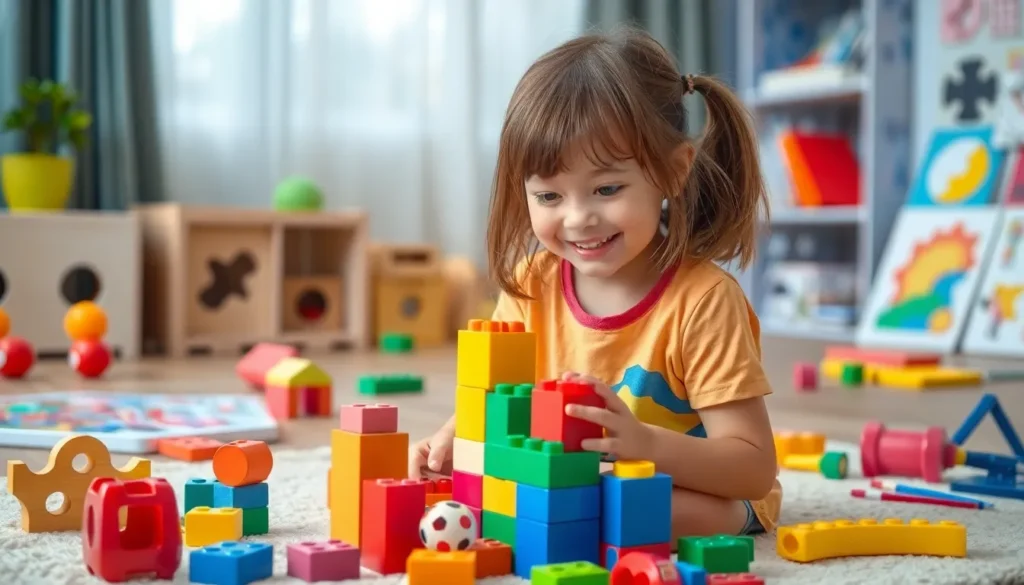Navigating the world of co-parenting can feel like trying to assemble IKEA furniture without the instructions—confusing and a bit overwhelming. A well-crafted co-parenting agreement template is like that magical instruction manual that makes everything a whole lot easier. It lays down the ground rules, ensuring both parents are on the same page while keeping the focus on what really matters: the kids.
Imagine a document that not only helps avoid those “Who forgot to pack the snacks?” debates but also sets clear expectations for everything from holiday schedules to school events. With a solid template in hand, co-parents can tackle parenting challenges with a smile instead of a frown. So, grab a cup of coffee, and let’s dive into how a co-parenting agreement can transform the chaos into a harmonious parenting partnership.
Table of Contents
ToggleUnderstanding Co Parenting Agreements
Co-parenting agreements clarify expectations and responsibilities for parents sharing custody of their children. These agreements form a foundational framework that guides interactions and decisions.
What Is a Co Parenting Agreement?
A co-parenting agreement defines the roles and responsibilities of each parent after separation or divorce. It outlines practical matters such as custody schedules, holiday arrangements, and financial obligations. Clarity regarding communication methods between parents also contributes to smoother co-parenting. Such agreements can be tailored to fit unique family dynamics, ensuring that both parents remain on the same page. A well-structured co-parenting agreement supports the child’s best interests by fostering cooperation between parents.
Importance of a Co Parenting Agreement
A co-parenting agreement serves multiple critical functions in shared parenting situations. It helps prevent misunderstandings by providing written guidelines. Such clarity reduces conflicts and promotes teamwork between parents. Additionally, these agreements enhance consistency in routines, which benefits children’s emotional stability. Parents equipped with a co-parenting agreement often find it easier to navigate challenges and unexpected circumstances. Overall, a detailed agreement lays the groundwork for a more positive co-parenting relationship, ultimately benefiting the children involved.
Key Components of a Co Parenting Agreement Template

A well-structured co-parenting agreement template should include several essential components to guide parents effectively. These components ensure clarity and alignment in shared responsibilities.
Child Custody Arrangements
Child custody arrangements define where the child lives and how parenting time is allocated. Schedules can include physical custody, legal custody, and visitation details. Parents may opt for joint custody, allowing both parents equal participation in decision-making. Alternatively, one parent may hold primary custody, with structured visitation for the other. Flexibility is key, with provisions for adjustments based on the child’s needs. Clear definitions prevent misunderstandings about logistics and ownership of responsibilities.
Financial Responsibilities
Financial responsibilities cover costs related to the child’s upbringing. Both parents should specify who pays for regular expenses such as food, schooling, and healthcare. An agreement might include provisions for shared costs, detailing the amounts and due dates. Clarity in financial obligations prevents disputes over support payments and associated costs. Parents can also consider including a clause for unexpected expenses, ensuring financial stability while addressing unforeseen needs. This structured approach fosters cooperation in managing financial matters.
Communication Guidelines
Communication guidelines specify how parents will interact regarding their child. Methods can include scheduled check-ins, text messages, or emails. Parents must prioritize respectful communication and timely responses for effective collaboration. Clear protocols help manage discussions about schedules, changes, or issues that arise. When both parties adhere to established channels, misunderstandings and conflicts decrease. Documenting these guidelines within the agreement supports ongoing communication and nurtures a positive co-parenting relationship.
Creating Your Co Parenting Agreement Template
Creating a comprehensive co-parenting agreement template involves careful planning and clear communication. Both parents benefit from a structured approach to establish effective parenting after separation.
Steps to Draft Your Agreement
- Identify key elements: Focus on important aspects like custody arrangements and financial obligations.
- Outline parenting schedules: Include details for weekdays, weekends, and holidays that suit the child’s needs.
- Develop communication guidelines: Set rules for how and when to communicate about the child.
- Specify decision-making authority: Define who makes decisions regarding education, health, and extracurricular activities.
- Review legal requirements: Check state laws to ensure the agreement is enforceable in court.
Tips for Effective Collaboration
- Encourage open dialogue: Both parents should express concerns and preferences honestly.
- Schedule regular meetings: Consistent discussions help address any arising issues promptly.
- Stay flexible: Being adaptable to changes in circumstances promotes better cooperation.
- Use a respectful tone: Communication should prioritize kindness and focus on the child’s best interests.
- Recognize achievements: Celebrate successes in co-parenting to strengthen partnership and reduce stress.
Common Mistakes to Avoid
Co-parenting agreements require careful attention. Avoiding common pitfalls can strengthen the agreement’s effectiveness.
Underestimating the Importance of Details
Details matter in a co-parenting agreement. Both parents should carefully outline specific custody schedules and parenting responsibilities. Omissions create confusion, leading to misunderstandings and conflicts. Clearly defining terms like holiday arrangements eliminates ambiguity. Each parent’s preferences regarding education, medical decisions, and extracurricular activities must also be included. Failing to address these details may result in disagreements later on. Comprehensive listings promote cooperation and accountability, ensuring both parents understand their roles.
Failing to Update the Agreement
Families evolve, and so should co-parenting agreements. Lifes changes, such as relocation, job shifts, or changes in children’s needs, require revisions. Ignoring these changes can lead to outdated arrangements that no longer serve the family’s best interests. Regularly reviewing the agreement ensures it reflects current circumstances. Parents should communicate openly about necessary updates, fostering a collaborative environment. Updating the agreement protects the well-being of the children. Outdated provisions can cause stress and conflict, complicating co-parenting efforts. Prioritizing regular assessments maintains harmony in shared parenting.
A well-structured co-parenting agreement template is essential for navigating the complexities of shared parenting. By clearly defining roles and responsibilities it fosters a cooperative environment that benefits both parents and children. Tailoring the agreement to fit unique family dynamics ensures that each parent remains aligned and focused on their children’s well-being.
Regular updates and open communication further enhance the effectiveness of the agreement. This proactive approach minimizes conflicts and misunderstandings while promoting a positive co-parenting relationship. Ultimately a comprehensive co-parenting agreement not only lays the groundwork for effective collaboration but also contributes to a stable and nurturing environment for children.









